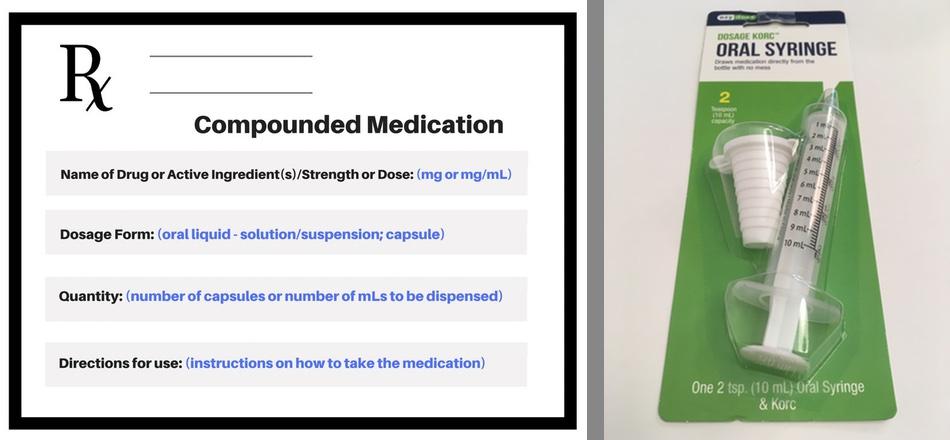Using a Compounding Pharmacy

In this method, a compounding pharmacy does the work of either compounding a solid drug into smaller-sized dosages that are not available from the drug’s manufacturer or into a liquid that can be tapered. This requires a customized prescription from a prescriber that is brought or mailed to a compounding pharmacy.
Pros
- Can remove a lot of the at-home work that’s often required for tapering.
- Some prescribers feel more comfortable when a pharmacy alters a drug instead of patients themselves.
- A compounding pharmacist may be able to provide helpful answers to questions and concerns.
- A compounded drug in liquid form potentially allows for further dose adjustments at home.
Cons
- Compounding pharmacies are not well regulated by either states or the federal government (FDA). Studies have shown that many compounding pharmacies often produce widely differing dosage levels outside legal parameters and have widely varying safety records – investigation is required.
- Insurance may not cover the cost, and can sometimes be pricey.
- Requires the participation of a prescriber, who has to write a customized prescription for the compounding pharmacist, and this may not always be obtainable.
- A compounded drug in solid form usually requires more frequent prescription refills for more frequent dosage changes.
- Some drugs cannot be compounded.
Which taper schedule it can work with
- If the compounded drug is in solid form, only a Cut-and-hold schedule will likely be possible
- If the compounded drug is in liquid form, either a Daily Microtaper or a Cut-and-hold schedule is possible
In this section
- Step 10- Get Informed About Your Psychiatric Drug
- Step 11- Ensuring that a Drug is Relatively ‘Taper-friendly’
- Step 12- Interactions, Reactions and Sensitivities
- Step 13- Taper Rates
- Step 14- Taper Schedules
- Step 15- Taper Methods
- Step 16- Preparatory Decisions
- Step 17- Gather the Gear
- Step 18- Essential Skills
- Step 19- Setting Up a Taper Journal
- Step 20- Implementing a Taper
TWP’s Companion Guide to Psychiatric Drug Withdrawal Part 2: Taper